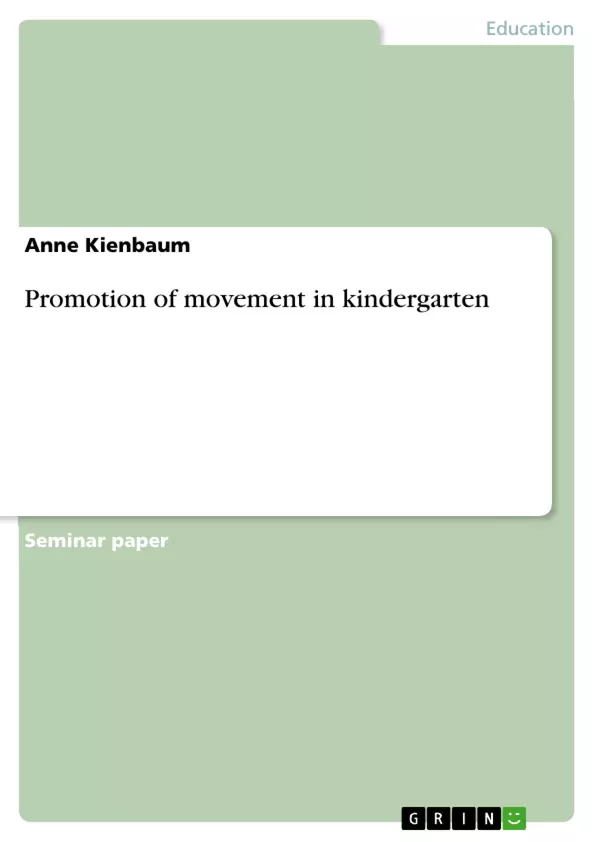The institution of kindergarten is particularly suitable for implementing physical activity promotion among preschool children. A large proportion of children between the ages of three and six attend kindergarten and spend a significant part of the day there. Thus, "for a high proportion of 3-6 year olds, kindergarten forms an essential part of their living environment" (Winkler p.13). Children can be reached here with movement promotion at a crucial age, in which "fundamental attitudes to one's own body are formed and movement behavior is decisively influenced" (Winkler p.11).
This raises the question of what starting points and possibilities exist for kindergartens to design and implement physical activity promotion in such a way that it can contribute to the overall healthy development of children. For this purpose, the effects of changes in the living environment of children on their opportunities for movement and experience will be considered. Then the importance of movement for children's development will be explained. Against this background, consequences for goals and implementation requirements of physical activity promotion in kindergartens are developed. Finally, examples are given to show which starting points exist in kindergartens to implement physical activity promotion in such a way that it can promote the healthy development of children.
Inhaltsverzeichnis (Table of Contents)
- 1. Introduction
- 2. Changed living and movement conditions of children.
- 3. The importance of movement for child development
- 3.1 Prerequisite of healthy physical development
- 3.2 Experience of the material environment
- 3.3 Experience of the social environment
- 4. Consequences for goals and implementation requirements of physical activity promotion
- 5. Implementation possibilities and starting points of physical activity promotion in kindergarten.
- Conclusion.
- Bibliography.
Zielsetzung und Themenschwerpunkte (Objectives and Key Themes)
This paper investigates the possibilities of promoting physical activity in kindergarten. It aims to understand the impact of changing living environments on children's movement opportunities and the importance of movement for their overall development. By analyzing these factors, the paper develops practical starting points and implementation requirements for physical activity promotion in kindergarten settings.
- Changing living conditions of children and their impact on movement opportunities
- The significance of movement for physical, cognitive, emotional, and social development
- Consequences for the implementation of physical activity promotion in kindergarten
- Practical starting points and possibilities for promoting physical activity in kindergarten
- The role of kindergarten as a crucial environment for promoting children's healthy development
Zusammenfassung der Kapitel (Chapter Summaries)
- Introduction: This chapter introduces the topic of physical activity promotion in kindergarten, highlighting the significance of the kindergarten setting for reaching children at a crucial developmental stage.
- Changed living and movement conditions of children: This chapter examines the impact of changing living environments on children's movement opportunities. It discusses the influence of factors such as increased road traffic, densification, and media consumption on children's ability to explore their environment and engage in active play.
- The importance of movement for child development: This chapter explores the multifaceted importance of movement for children's overall development, covering its role in healthy physical development, experiencing the material environment, and social development.
Schlüsselwörter (Keywords)
This paper focuses on physical activity promotion, kindergarten, child development, movement experiences, changing living conditions, media consumption, physical health, cognitive development, social development, implementation possibilities, and starting points.
- Citation du texte
- Anne Kienbaum (Auteur), 2003, Promotion of movement in kindergarten, Munich, GRIN Verlag, https://www.grin.com/document/1170839



